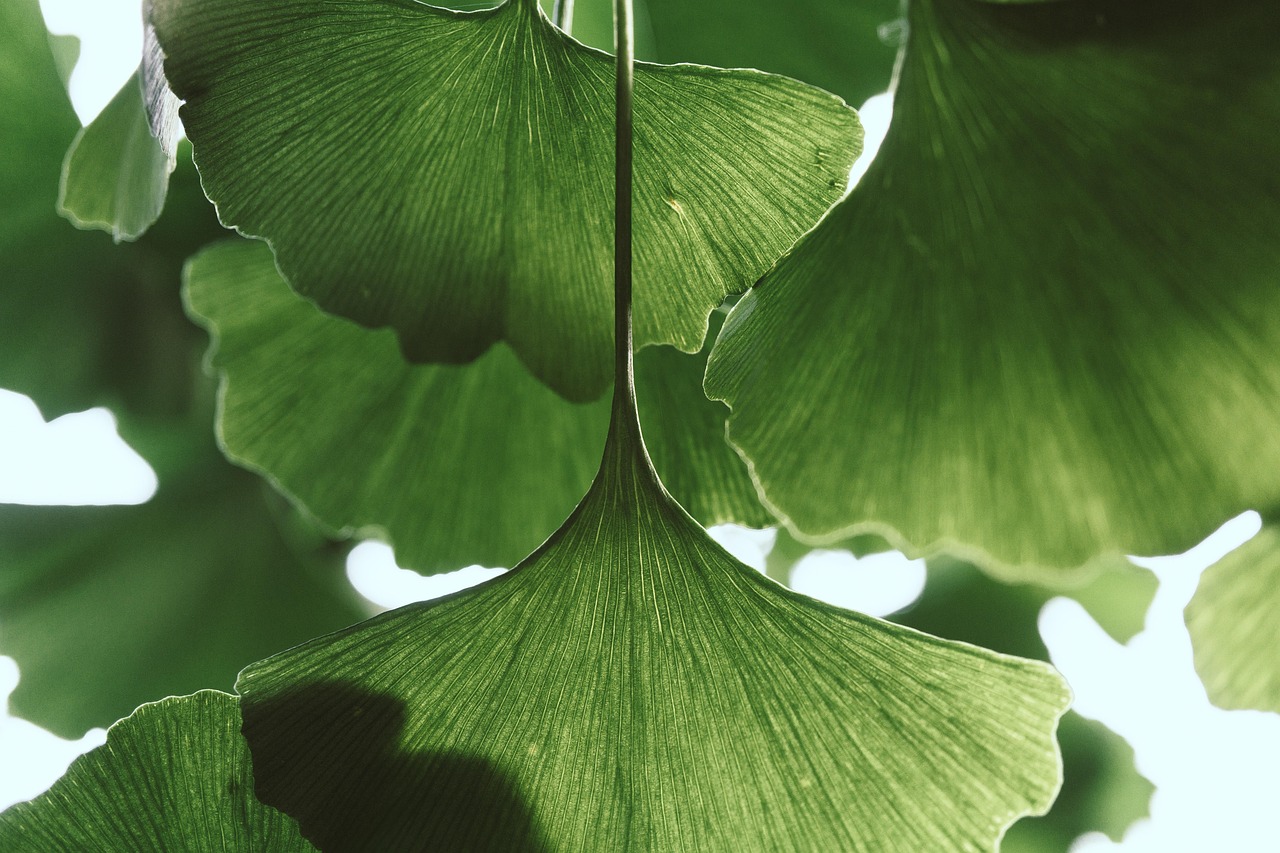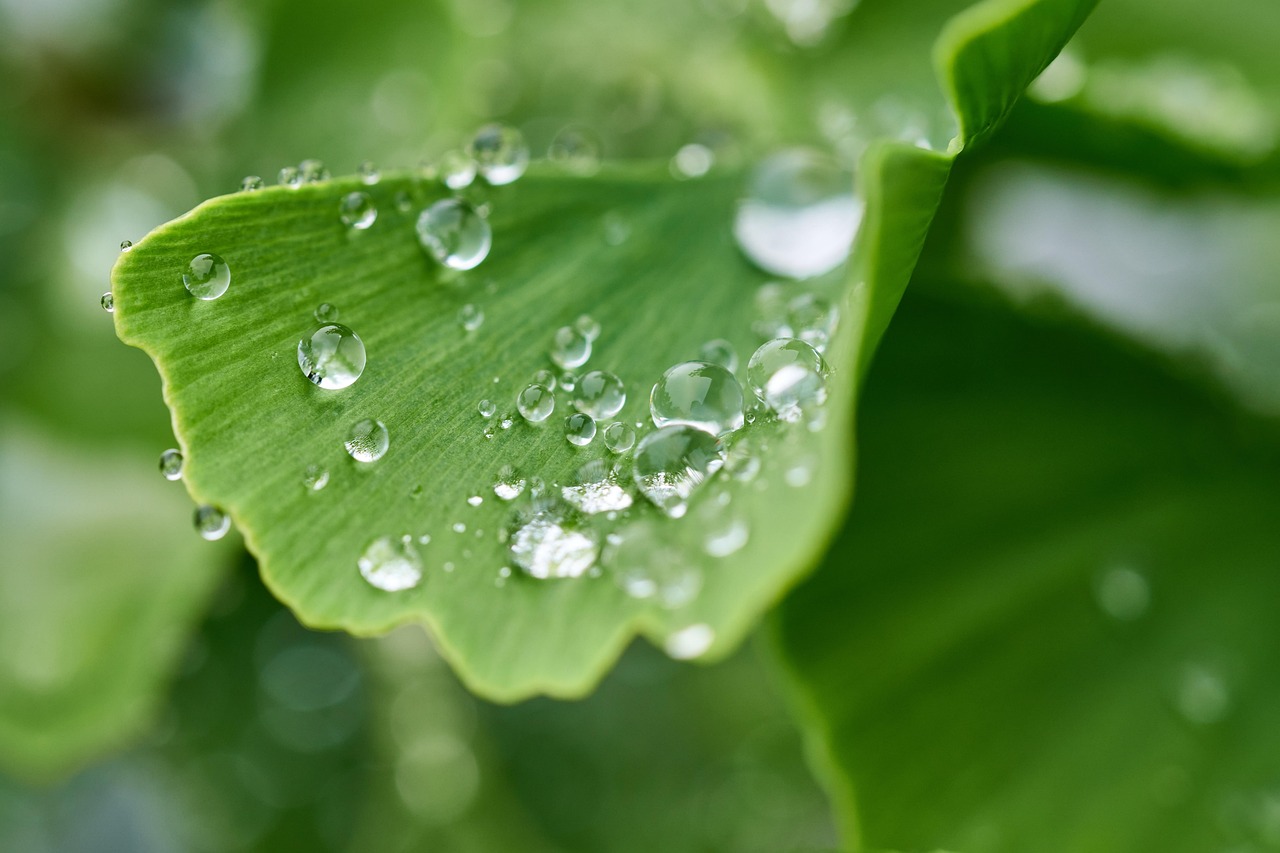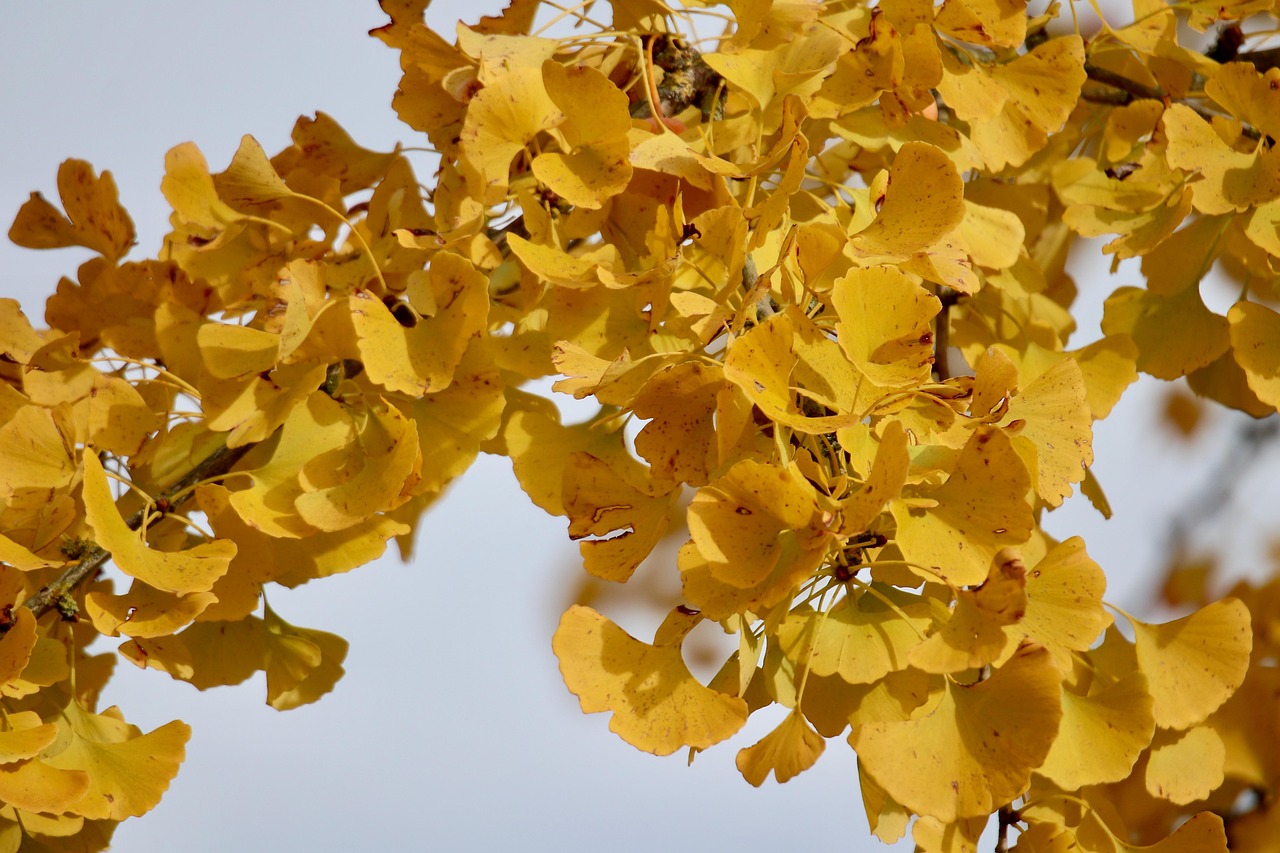To maintain the long-lasting beauty of a Ginkgo tree, prune it during late winter or early spring. Focus on removing dead, damaged, or crossing branches. This promotes healthy growth and enhances the tree’s shape, ensuring it remains vibrant and visually appealing throughout the seasons.
The Ginkgo tree, known for its stunning fan-shaped leaves and resilience, is a popular choice for landscaping. Originating from ancient China, this tree has survived for millions of years and is often referred to as a “living fossil.” Its unique appearance and adaptability make it a favored option for both residential and urban environments. However, to keep your Ginkgo tree looking its best, proper pruning is essential.

Pruning not only helps maintain the health of the tree but also improves its aesthetic appeal. By removing unnecessary branches, you allow better sunlight penetration and air circulation within the canopy. This practice significantly reduces the risk of diseases that can affect tree health. Additionally, shaping the tree through pruning can enhance its natural form, giving it a more pleasing silhouette.
Understanding Ginkgo Tree Growth
Before diving into pruning techniques, it is important to understand how Ginkgo trees grow. Here are some key characteristics:
| Characteristic | Description |
|---|---|
| Growth Rate | Moderate to fast; can grow up to 2 feet per year. |
| Height | Can reach heights of 50 to 80 feet. |
| Width | Can spread 30 to 40 feet wide. |
| Lifespan | Can live for over 1,000 years. |
These characteristics indicate that Ginkgo trees can become quite large and require regular maintenance. Additionally, their unique leaf structure contributes to their beauty, especially in the fall when they turn vibrant yellow. Proper pruning practices will ensure that your Ginkgo tree not only thrives but also showcases its magnificent foliage year after year.

When planning to prune your Ginkgo tree, consider the following tips to achieve optimal results:
Best Times to Prune a Ginkgo Tree
The timing of pruning is crucial for the health of your Ginkgo tree. The best time to prune is during late winter or early spring, before new growth begins. This timing allows the tree to heal quickly from cuts made during pruning. Pruning during dormancy minimizes stress and prevents sap loss, which can weaken the tree.
Essential Pruning Tools
Having the right tools is vital for effective pruning. Here are some essential tools you should have:

- Pruning Shears: Ideal for cutting smaller branches.
- Loppers: Best for medium-sized branches.
- Saw: Necessary for larger branches that need to be removed.
- Gloves: Protect your hands from cuts and scratches.
- Safety Glasses: Shield your eyes from debris while cutting.
Each tool serves a specific purpose, ensuring cleaner cuts that promote quicker healing. Clean cuts reduce the risk of disease entering through open wounds. Regularly sharpen your tools for the best results and to minimize damage to the tree.
Pruning Techniques for Ginkgo Trees
Understanding the right techniques is key to successful pruning. Here are some effective methods:
- Remove Dead or Damaged Branches: Start by cutting away any branches that are dead or broken. This prevents potential disease spread.
- Crown Thinning: Thin out crowded areas in the canopy to improve light penetration and air circulation.
- Crown Raising: Remove lower branches if they interfere with walkways or other plants, ensuring a neat appearance.
- Crown Reduction: If the tree becomes too large, carefully reduce its height by trimming back branches without damaging its natural shape.
Each technique serves a specific purpose and contributes to the overall health of the tree. By following these methods, you can ensure that your Ginkgo tree remains strong and beautiful throughout its long life.

In addition to these techniques, regularly inspecting your tree for signs of disease or insect infestation will help maintain its health. Prompt attention to any issues will prevent bigger problems down the line.
Identifying the Right Pruning Cuts
Understanding how to make the right cuts is crucial for effective pruning. There are specific techniques that can enhance the health and appearance of your Ginkgo tree. Knowing where and how to cut will help prevent damage and encourage proper growth.
Types of Cuts
There are several types of cuts you can make when pruning a Ginkgo tree:
- Heading Cuts: These cuts shorten a branch and encourage bushier growth. Make the cut just above a bud that faces outward to promote outward growth.
- Thinning Cuts: These cuts remove entire branches at their base. This method improves air circulation and light penetration without disrupting the shape of the tree.
- Rejuvenation Cuts: Used for older trees, these cuts remove a significant portion of older branches. This encourages new growth and revitalizes the tree.
Each cut serves a distinct purpose and can be applied based on the specific needs of your Ginkgo tree. Understanding these techniques will enhance your ability to maintain a healthy and attractive tree.
Common Mistakes in Pruning Ginkgo Trees
Even experienced gardeners can make mistakes while pruning. Being aware of these common pitfalls can help ensure that your Ginkgo tree thrives.
- Pruning at the Wrong Time: Pruning during late spring or summer can stress the tree and promote disease. Stick to late winter or early spring for best results.
- Over-Pruning: Removing too many branches can shock the tree and hinder its growth. Always keep some foliage intact to sustain photosynthesis.
- Improper Cuts: Making cuts too close to the trunk can damage the bark, leading to decay. Cut just outside the branch collar for optimal healing.
- Neglecting Tool Maintenance: Dull tools can tear branches instead of making clean cuts. Regularly sharpen and sanitize your tools before each use.
Avoiding these mistakes will help you maximize the health and beauty of your Ginkgo tree. Proper pruning techniques are essential for maintaining its longevity and enhancing its aesthetic appeal.
Seasonal Care After Pruning
After pruning, it is essential to provide proper care to your Ginkgo tree. This care will support recovery and healthy growth throughout the seasons.
Watering
Watering is crucial, especially during dry spells following pruning. Here are some tips:
- Deep Watering: Make sure to water deeply but infrequently, allowing the soil to dry out between sessions.
- Avoid Overwatering: Ensure proper drainage to prevent root rot. Keep an eye on soil moisture levels.
Nutrient Management
Fertilizing after pruning can help your Ginkgo tree recover faster. Consider these guidelines:
- Selecting Fertilizer: Use a balanced fertilizer with equal parts nitrogen, phosphorus, and potassium.
- Application Timing: Apply fertilizer in early spring, just as new growth begins. This timing supports the tree’s energy needs.
Pest and Disease Management
Following pruning, monitor your Ginkgo tree for any signs of pests or diseases. Early detection is vital for effective management.
Common Pests
The Ginkgo tree is relatively resistant to pests, but some may still pose threats:
- Scale Insects: These pests suck sap from the tree, leading to weakened foliage. Look for sticky residue or a black sooty mold on leaves.
- Aphids: These small insects also feed on sap and can cause leaf curling. Monitor for clusters on new growth.
- Spider Mites: Tiny and difficult to see, they can cause leaf discoloration and stippling. Check for fine webbing on foliage.
Disease Prevention
The Ginkgo tree is generally hardy but can still suffer from certain diseases:
- Crown Gall: Caused by bacteria, this disease creates galls on roots and stems. Prevent it by ensuring proper drainage and avoiding injury to roots.
- Leaf Spot: Fungal infections can lead to unsightly spots on leaves. Improve air circulation through proper pruning to minimize risk.
Implement integrated pest management strategies to control pests effectively while minimizing harm to beneficial insects. Regular inspections will help keep your Ginkgo tree healthy and beautiful throughout its life.
Seasonal Aesthetics of Ginkgo Trees
The Ginkgo tree is celebrated not only for its unique structure but also for its seasonal beauty. Each season brings a different look, making it a wonderful addition to any landscape. Understanding how to enhance this natural beauty through pruning and care can further elevate its appeal.
Spring Awakening
In spring, Ginkgo trees begin to show new growth after the winter dormancy. The fresh, bright green leaves emerge, creating a vibrant canopy. This is the perfect time to assess the tree’s health and structure:
- Inspect for Damage: Check for any winter damage to branches and leaves. Remove any dead or broken branches to encourage healthy growth.
- Ensure Proper Light Exposure: If branches are overcrowded, consider thinning them out to allow sunlight to reach the inner foliage.
By taking these steps, you can help your Ginkgo tree thrive as it enters its most active growing season.
Summer Maintenance
During the summer months, Ginkgo trees are in full leaf and can provide excellent shade. It is essential to maintain their health during this period:
- Watering Schedule: Ensure consistent watering, especially during dry spells. Monitor soil moisture to prevent stress on the tree.
- Pest Monitoring: Regularly inspect the leaves for signs of pests or disease. Prompt action can prevent infestations from spreading.
- Light Pruning: If necessary, perform light pruning to maintain shape without stressing the tree.
By maintaining healthy watering practices and monitoring for pests, you can ensure your Ginkgo tree remains lush and beautiful throughout the summer.
Autumn Color Display
One of the most remarkable features of the Ginkgo tree is its stunning fall color. As autumn approaches, the leaves turn a brilliant yellow, creating a breathtaking spectacle:
- Timing of Color Change: The leaves typically begin to change in late September to early October, depending on climate conditions.
- Leaf Drop: Ginkgo trees are known for their sudden leaf drop, often shedding all leaves at once after a frost. Embrace this natural cycle in your landscape design.
This vibrant display can be enhanced with proper pruning during the previous spring and summer, allowing for a full canopy of leaves that turn color beautifully in fall.
Winter Care and Structure
During winter, Ginkgo trees enter a period of dormancy. While they may appear bare, this is an excellent time to prepare for the upcoming growing season:
Pruning in Winter
Winter is an ideal time for structural pruning. Here are some considerations:
- Visibility of Structure: With leaves gone, it is easier to see the overall structure of the tree. Look for any weak or crossing branches that may need removal.
- Wound Healing: Pruning in winter allows the tree to heal before spring growth begins, minimizing stress.
- Cleansing the Canopy: Remove any remaining dead wood or damaged branches that can become hazards during winter storms.
Protection Against Harsh Conditions
While Ginkgo trees are hardy, they can still benefit from some winter protection:
- Mulching: Apply a layer of mulch around the base of the tree to help retain moisture and insulate roots against freezing temperatures.
- Watering Before Freezes: Ensure the tree is adequately watered before hard freezes to help it endure cold weather.
Implementing these winter care techniques will help your Ginkgo tree remain healthy and strong as it prepares for another beautiful growing season.
Creating a Beautiful Landscape with Ginkgo Trees
The Ginkgo tree can serve as a stunning focal point in landscaping design. Its unique aesthetic qualities and seasonal changes make it a versatile choice for various settings. Here are some ideas for incorporating Ginkgo trees into your landscape:
Focal Point Planting
Planting a Ginkgo tree as a standalone feature can create a striking centerpiece in your garden or yard. Consider these aspects:
- Location: Choose a location that provides ample space for growth and showcases its beauty from various angles.
- Cohesive Planting: Pair the Ginkgo with complementary plants that enhance its color and texture, such as ornamental grasses or flowering shrubs.
Street and Urban Planting
Ginkgo trees are often used in urban settings due to their resilience and ability to thrive in challenging environments. Here are some benefits:
- Pavement Tolerance: Ginkgos can withstand compacted soil and urban pollution better than many other species.
- Shade Provision: Their broad canopy provides much-needed shade in city parks and streetscapes.
Their ability to adapt to urban environments makes Ginkgo trees an excellent choice for enhancing city landscapes while providing environmental benefits.
The Historical Significance of Ginkgo Trees
The Ginkgo tree holds a significant place in history and culture. Often referred to as a “living fossil,” it has survived various climatic changes and historical events:
- Cultural Symbolism: In many cultures, the Ginkgo symbolizes longevity, resilience, and peace.
- Nutritional Uses: The seeds of the Ginkgo tree have been used in traditional medicine and cuisine, particularly in Asian cultures.
This rich history adds depth to the cultivation of Ginkgo trees in gardens, making them not just beautiful but also meaningful additions to any landscape.
Environmental Benefits of Ginkgo Trees
The Ginkgo tree does not only offer aesthetic value but also provides significant environmental benefits. Understanding these advantages can inspire greater appreciation for this unique species and encourage its cultivation.
Air Quality Improvement
Ginkgo trees play a vital role in improving air quality. They absorb carbon dioxide and release oxygen, contributing to a healthier atmosphere. Here are some specific benefits:
- Pollutant Absorption: Ginkgo trees can absorb harmful pollutants such as sulfur dioxide and nitrogen dioxide, helping to cleanse urban air.
- Dust Reduction: The broad leaves help trap dust and particulate matter, reducing pollution levels in their immediate environment.
Habitat Provision
Ginkgo trees provide habitat for various bird species and insects. This biodiversity is crucial for ecosystem balance:
- Bird Nesting: The sturdy branches offer nesting sites for birds, contributing to local wildlife populations.
- Insect Attraction: Ginkgo trees can attract beneficial insects, which play a role in pollination and pest control.
Soil Health
Ginkgo trees can also enhance soil health. Their deep root systems help improve soil structure and reduce erosion:
- Soil Stabilization: The extensive root network helps anchor soil, preventing erosion during heavy rain.
- Nutrient Cycling: Fallen leaves decompose and enrich the soil, providing nutrients for other plants.
By considering the environmental benefits of Ginkgo trees, homeowners and urban planners can make informed decisions about landscaping and tree selection that support sustainability and biodiversity.
Choosing the Right Location for Ginkgo Trees
Proper placement of Ginkgo trees is essential for their growth and health. When selecting a site, consider the following factors:
- Sunlight Requirements: Ginkgo trees thrive in full sun. Ensure the selected site receives at least six hours of direct sunlight daily.
- Space Considerations: Allow ample room for growth. Ginkgo trees can reach impressive heights and widths, so choose a location where they won’t be crowded by other plants or structures.
- Soil Type: While Ginkgo trees are adaptable to various soil types, they prefer well-drained soils. Conduct a soil test to determine pH levels and nutrient content, ensuring the planting area supports healthy growth.
By carefully choosing the right location, you can set your Ginkgo tree up for success and ensure it thrives for many years.
Final Thoughts
Pruning a Ginkgo tree is a rewarding task that enhances its beauty and longevity. By understanding the proper techniques, timing, and care involved in pruning, you can maintain a healthy tree that provides aesthetic value through all seasons.
The Ginkgo tree’s historical significance, environmental benefits, and seasonal beauty make it a standout choice for any garden or urban landscape. Its resilience and adaptability ensure that it will thrive in various conditions while offering numerous advantages, from improved air quality to habitat provision.
Cultivating a Ginkgo tree is not just an investment in your landscape; it is also a contribution to a healthier environment. Through mindful pruning practices and care, you can enjoy this “living fossil” for generations to come.
Overall, whether you are an experienced gardener or new to tree care, the Ginkgo tree offers an enriching experience that combines beauty, history, and ecological benefits. Embrace the opportunity to cultivate this remarkable tree and witness its transformation throughout the seasons.
